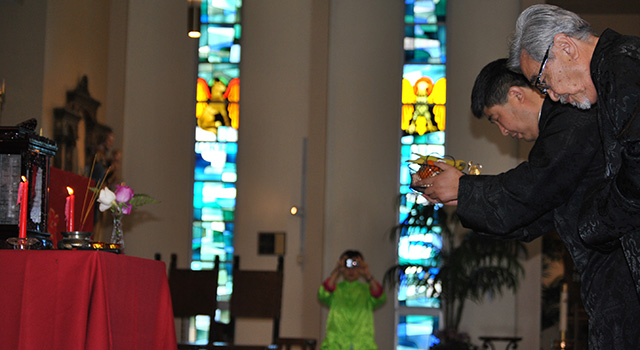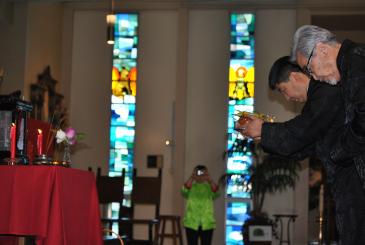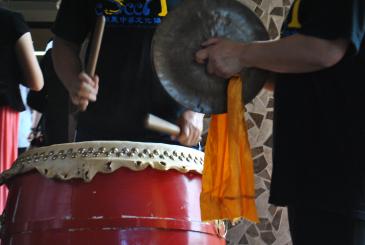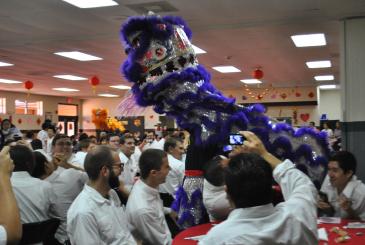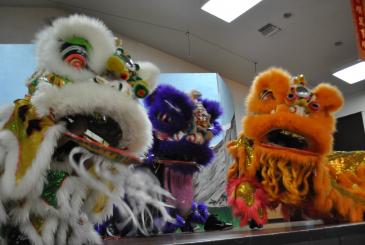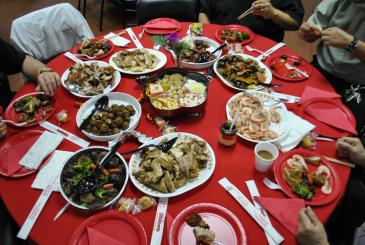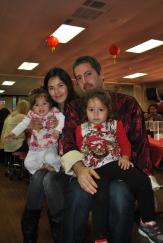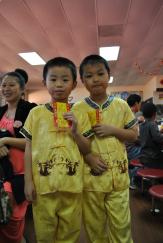By Blanca Morales - Florida Catholic
Photography: BLANCA MORALES | FC
FORT LAUDERDALE | Though it was the first Sunday of Lent, the altar at St. Jerome Parish was draped in red.
Red is a festive color in Chinese culture, and on Feb. 22, the Chinese Apostolate of the Archdiocese of Miami, which consists of approximately 80 families, celebrated the Chinese New Year.
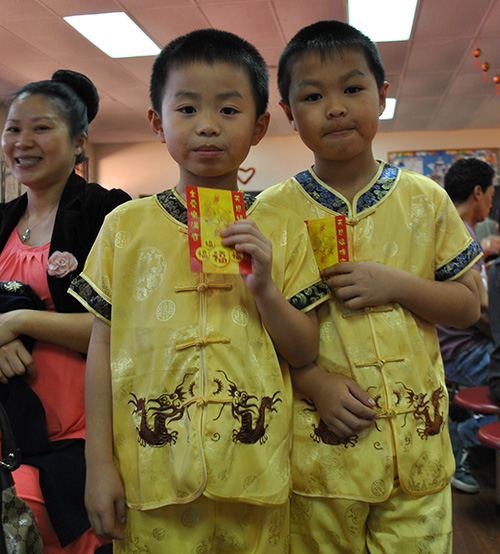
Photographer: BLANCA MORALES | FC
Brothers Andrew and Ethan Jiang, aged 7 and 8, hold up their Hong Bao, or red envelopes, which contain a monetary gift and a holy card of Our Lady of China. Their mother, Yan C. Shi, looks on.
On this occasion, they were joined by 95 seminarians from St. John Vianney College Seminary in Miami, eager to experience the cultural diversity in the archdiocese.
The new lunar year began Feb. 19, but in China the celebration continues for a few days as families and neighbors take the time to visit one another to wish each other Xin Nian Hao, or “New Year goodness.”
At the Mass, four Chinese characters surrounded the image of the cross on the altar cloth. The characters spelled out the phrase, “Worship God, Venerate Ancestors,” which reminded the faithful of their beliefs as Chinese Catholics.
Filial piety is central to Asian culture. Ancestor veneration is an integral part of Chinese heritage, to express honor to family members who are deceased.
“When the Chinese Catholics practice this, it also reminds us of the fourth commandment,” said Bernadette Chik, president of the apostolate.
“It fulfills the commandment of loving our parents and praying for them when we pray for our ancestors,” said Deacon Alex Lam, who serves at St. Louis Parish in Pinecrest.
The custom also is in keeping with Catholicism’s veneration and intercession of the saints, as stated in the Catechism (#957-958)
To remember the deceased, a tablet, set up next to a crucifix, bears the names of the loved ones, before which the family members bow or prostrate themselves to show respect.
Catholic expression differs from secular ancestor veneration in that the tablet may not contain superstitious inscriptions; nor is the burning of joss papers allowed, which is a superstition believed to “give riches” to the deceased in the afterlife.
The ancestor veneration at St. Jerome was conducted by Father Peter Lin, a Chinese priest who works as a chaplain to seafarers in Port Everglades, and Deacon Lam. Both entered wearing black ceremonial Chinese cassocks and bowed once before the main altar.
Deacon Lam addressed those present, in particular the seminarians, regarding the history and meaning of ancestor remembrance.
“This rite allows us to rejoice in communion,” said Deacon Lam. “It invites us to ponder eternal thoughts by delighting in the simplicity of unity.”
Intercessory prayers were said as Father Lin lit incense and placed flowers, wine, fruit and incense on the table. At the conclusion of the rite, congregants all bowed three times as an act of respect and honor.
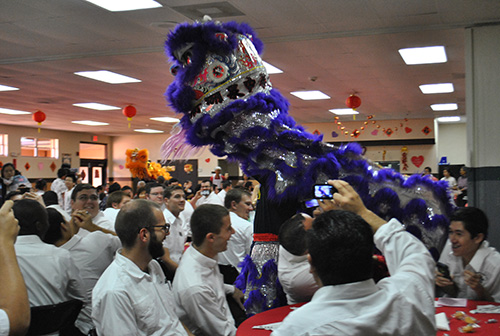
Photographer: BLANCA MORALES | FC
A Chinese lion dances between the tables where seminarians from Saint John Vianney College Seminarians sit.
Following the ceremony and Mass, which was concelebrated by St. Jerome’s pastor, Father Curtis Kiddy, guests partook of a traditional feast, and enjoyed a Lion Dance performance by the Coral Springs Chinese Cultural Association.
Seminarians were challenged to play games involving Chinese cultural trivia. They also were given “Hong Bao,” or red envelopes, containing a holy card of Our Lady of China.
Children, after performing a song, also received red envelopes from their families. Traditionally, children and singles receive monetary gifts in the Hong Bao from their married relatives.
Zachary Baird, a seminarian from the Diocese of Orlando, said he appreciated the welcome they received from the apostolate.
“Despite that we come from completely different cultures — American, Hispanic or Caribbean — they were so accepting of all of us,” he said.
Attending the Mass, which was celebrated in both Cantonese and Mandarin, was a good learning experience for the seminarians, said Msgr. Roberto Garza, rector at St. John Vianney.
“It’s an opportunity to witness the universality of the Church. Despite differences in language, it shows how we are united in Christ,” he said. “That’s the beauty of the Catholic Church. No matter where you go, the Mass is the same. The language may be different, but the mystery that takes place upon the altar is the same.”
FIND OUT MORE
- After centuries of debate among missionaries and clergy, Chinese Catholics have permission to perform rites of ancestor veneration on special occasions such as All Soul’s Day, the New Lunar Year, funerals or Quing Ming Day.
- A 1939 document by Pope Pius XII recognized that “in the East, some ceremonies, although of great antiquity and originally connected with pagan rites, nowadays, on account of changing customs and ways of thinking, have come to have a merely social significance, out of respect for one’s ancestors.”
- The liturgical texts for the ritual are based on the “Proposed Catholic Ancestor Memorial Liturgy” issued by the Chinese bishops’ conference in 1974.
